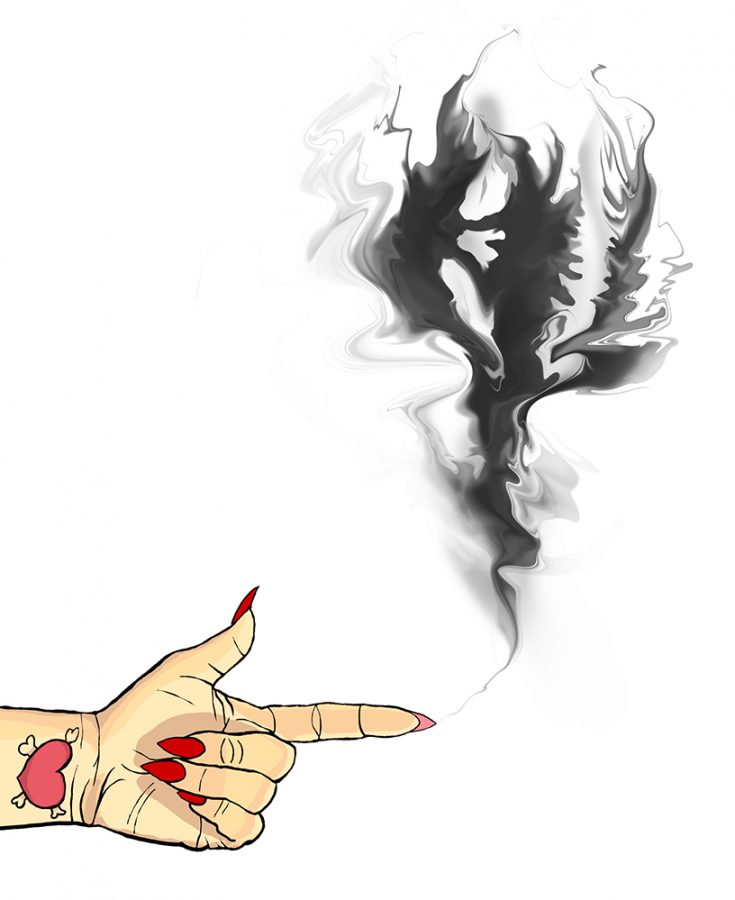The ugly side of the beauty industry
December 7, 2016
At first glance, shellac manicures and jeweled acrylic nails may seem like harmless beauty products. However studies conducted through the California Environmental Protection Agency’s Department of Toxic Substances Control reveal an ugly side to the beauty industry.
On Nov. 30, the U.S. EPA awarded a $120,000 grant to Asian Health Services, an Oakland-based community health center that provides care to Asian immigrant and refugee communities in the Bay Area, to help improve nail salon safety standards. The group was one of ten other organizations to receive this grant, which was dispersed nationwide, according to an EPA news release.
The money will be used to fund The Healthy Nail Salon program, a microloan program that helps salons in Alameda, San Francisco and San Mateo counties qualify as “Healthy Nail Salons” through safer handling practices, headed by Julia Liou, director of program planning and development at Asian Health Services and co-founder of the California Healthy Nail Salon Collaborative.
According to Liou, there are over 129,000 manicurists in California and an estimated 53,000 licensed establishments, many of which provide nail services, operating in the state.
In order to become a “healthy nail salon,” salons have to adhere to nine criteria: they must agree to use nail polishes without the “toxic trio,” toluene, formaldehyde and dibutyl phthalate, or DBP; use safer nail polish removers like like acetone instead of those containing ethyl or butyl acetate; avoid nail polish thinners, require staff to wear nitrile gloves when handling products; properly ventilate the salon; install a mechanical ventilation unit within a year after entering program, properly train all staff; adopt safer products; and prevent customers from bringing in their own products unless they meet criteria.
Liou said it is not uncommon for manicurists to work up to ten hours a day, six or seven days a week in poorly-ventilated areas. They come in direct contact with toxic chemicals that are known to cause significant health impacts, many which are found in many standard nail products, according to Liou.
Prolonged exposure to chemicals like acetone, which is considered a safer chemical found in nail polish remover and fingernail glue remover, can cause headaches, dizziness, skin irritation and depression of the nervous system, according to an EPA handbook for nail salon workers. Other ingredients such as formalin, found in nail hardener, can cause irritation to eyes, nose, skin and throat, respiratory problems and even cancer if inhaled in a high concentration.
EPA Northern California press officer Michele Huitric pointed out that nail products themselves aren’t necessarily toxic, it’s the chemicals within them that are. Nail salons buy their products through wholesale distributors. Huitric said there are safer products on the market, but salons don’t always purchase them due to costs, lack of knowledge about safer products, and even false labeling.
A study conducted by the DTSC in 2012 found toluene, formaldehyde and dibutyl phthalate, chemicals that are known to cause health conditions such as cancer, birth defects, asthma and other long-term issues, in commonly used products that were incorrectly labeled as “toxic-free,” according to a DTSC press release.
When the DTSC sampled 25 nail care products from six different Bay Area locations, it found that ten of the 12 products that claimed to be free of toxic chemicals contained at least one of these major chemicals, some with even higher levels than products with no toxic-free claims, according to the DTSC.
Liou said this is significant because the cosmetology industry is a haven for the Asian immigrant community. Ninety-seven percent of salon workers are women, and about half are of Vietnamese descent, according to the EPA.
“We were trying to think of a solution to help support small businesses that are an important economic fabric of immigrant communities,” said Liou.
Many immigrant women are disadvantaged by limited vocabularies, lack of health care and and understanding about U.S. health care systems, according to the California Healthy Nail Salon Collaborative, an organization that advocates for higher health and safety standards in the salon industry. Because of this, there are few safeguards for workers and their health and safety through the cracks.
The Collaborative will help implement the Healthy Nail Salon Program in Partnership with Asian Health Services, the Federal Reserve Bank, San Mateo, San Francisco and Alameda Counties and local nonprofit microlenders, Working Solutions and Opportunity Fund, according to the EPA.
The grant will provide any salon that wants to become a Healthy Nail Salon with a $5,000 loan to help them install ventilation units, purchase safer products and adhere to the other criteria, saidLiou. She added that while localized efforts are important, a larger issue is the lack of safe products on the market.
Liou said Asian Health Services will conduct door-to-door outreach to introduce this option to salons around the Bay Area. It will also conduct trainings for nail salons and workers about chemical exposure, proper disposal of hazardous waste, according to Huitric.
This grant isn’t the first awarded by the EPA to help improve nail salon safety standards. In 2013, the organization provided Asian Health Services with a $30,000 environmental justice grant to reduce chemical exposure and improve safety standards for nail salons operating in Alameda, Marin and Santa Clara counties, according to the EPA. It also awarded a grant to Boat People SOS in 2012, an organization that provides health services, academic support and financial support to Vietnamese communities throughout the U.S. Huitric said the EPA’s role is limited to voluntary approaches, since the Food and Drug Administration is the governing body charged with regulating nail salon products.
Organizations like the Occupational Safety and Health Administration and the CDC have also awarded grants and conducted research to other organizations supporting this cause.

















